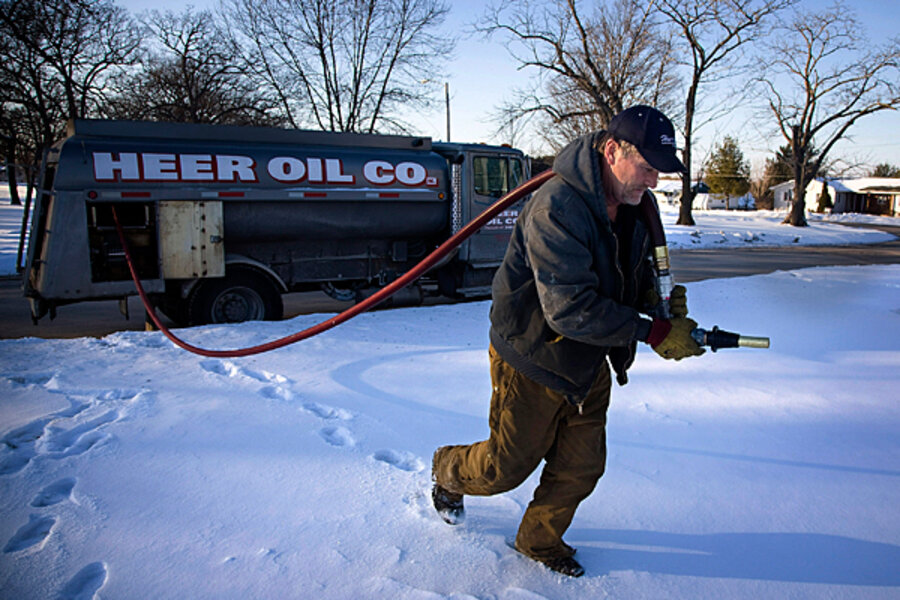Heating oil could cost a homeowner $259 more this winter
Loading...
| New York
Consumers will probably have to set aside extra money to keep the house warm this winter.
Within the past month, the price of crude oil has climbed about $10 a barrel, now costing close to $83 a barrel. Compared with last winter, crude prices are currently $6 a barrel higher.
As a result, predicts the Department of Energy, the cost of a household keeping warm in the Northeast with home heating oil this winter will rise by $259 to $2,201 in comparison with last year. That’s a 13 percent increase.
For people heating with natural gas – about 52 percent of all households nationally – the cost of staying warm is expected to go up by only $27, according to DOE.
Consumers who use home heating oil should probably be arranging deliveries, suggested the American Petroleum Institute (API) in a briefing for reporters Friday.
“The time to get ready is now,” says John Felmy, chief economist at the API. “It’s time to talk to your heating-oil suppliers.”
The API briefing comes just as the weather in the Northeast is starting to shift to much cooler and more-blustery conditions. By this weekend, some parts of the Northeast could have low temperatures in the 30s, AccuWeather.com forecasts.
“The following weekend, there will be another shot that will be even colder,” says Henry Margusity, senior meteorologist at AccuWeather.com. “But this is the time of year, you expect it to get colder.”
December is going to start out cold, with the possibility of snow or ice storms, Mr. Margusity says. But by January and February, he says, the temperatures will warm. “People are going to be asking, ‘What happened to winter?’ ” he says.
For the Lower 48, predicts the National Oceanic and Atmospheric Administration (NOAA), October to March will be 3 percent warmer compared with last winter and 1 percent warmer than the 30-year average.
Mr. Felmy says that sounds about right to him. “I’m not a weather forecaster, but the woolly bear caterpillars I’ve seen so far are forecasting with the amount of brown on them that we will have an average winter.”
The higher cost of staying warm comes against a backdrop of rising demand for petroleum products, such as diesel for trucks and jet fuel. Even gasoline demand is going up.
“The September data suggests a move toward economic recovery,” Felmy says. Stronger distillate [diesel and fuel-oil] demand indicates an uptick in industrial activity, while stronger jet fuel and gasoline demand point to increased business and consumer confidence.”
Felmy was especially cheered by a 6.9 percent increase in distillate demand last month compared with a year ago. Much of this increase is the result of more business for trucks, which transport the bulk of businesses’ goods.
“That’s a good sign for the economy,” says Felmy.





